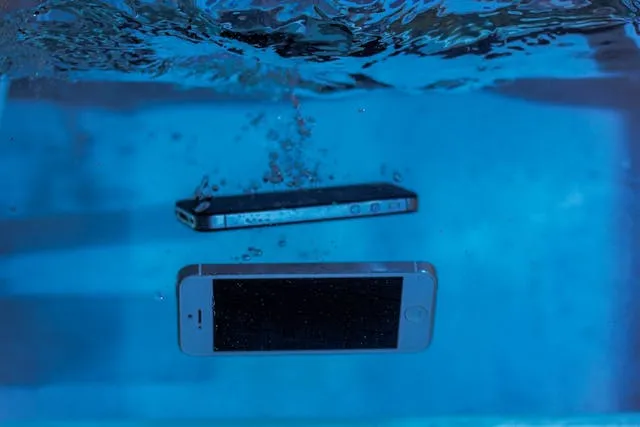Listening to music has become part of nearly every daily activity — from working out to relaxing at the beach. But for a long time, one dream seemed impossible: enjoying high-quality sound underwater. Thanks to innovation, that’s no longer the case. Modern waterproof headphones now allow swimmers, runners, and outdoor enthusiasts to experience music anywhere — rain or shine, pool or ocean.
The evolution of waterproof headphones is a story of creativity, persistence, and science. What started as basic splash-proof devices has developed into sophisticated audio systems capable of delivering crystal-clear sound even several meters underwater.
Also Read: Travertine Pool Pavers: Benefits for Australian Climate and Design Styles
From splash-proof to fully submersible
In the early days, most so-called “waterproof” models were merely water-resistant. They could handle sweat and light rain, but full submersion was out of the question. Their seals weren’t tight enough, and drivers often failed when moisture reached internal circuits.
The breakthrough came with standardized IP (Ingress Protection) ratings. Products labeled IPX7 or IPX8 can now survive complete immersion without damage. This shift marked the birth of true waterproof headphones, enabling athletes, swimmers, and outdoor adventurers to use their devices confidently in any environment.
These innovations not only made headphones more durable but also raised expectations for performance and sound quality.
The technology that keeps sound alive
Delivering quality sound underwater presents unique challenges. Water conducts sound differently than air, making traditional speaker designs ineffective. To solve this, engineers introduced bone conduction technology, which transmits sound vibrations through the cheekbones directly to the inner ear.
This approach allows users to enjoy music clearly even when their ears are underwater or covered by swim caps. Modern waterproof headphones also use advanced hydrophobic coatings, watertight membranes, and corrosion-resistant materials to protect internal components.
The result is consistent, distortion-free sound whether you’re diving into a pool or running through a storm.
Fitness freedom: Training without limits
For athletes, the introduction of waterproof headphones has been a game-changer. Runners no longer worry about sweat damaging their gear, and swimmers can now enjoy playlists that keep them motivated throughout their workouts.
Many models feature built-in MP3 storage, allowing music playback without relying on Bluetooth, which doesn’t travel well through water. Others include secure fits, ergonomic designs, and long battery life, ensuring uninterrupted performance during intense training sessions.
This freedom has redefined the relationship between sound and movement, turning waterproof audio into an essential part of modern fitness culture.
Design improvements and comfort
As the technology matured, manufacturers shifted focus to comfort and style. Early waterproof models were heavy and rigid, but newer versions use lightweight silicone and flexible ear hooks that mold comfortably to any ear shape.
Durability has also improved dramatically. Nano-coating and sealed housings prevent corrosion, while flexible cables and waterproof controls make operation simple even when wet. Some models can withstand saltwater, making them perfect for ocean swimmers and triathletes.
Today’s waterproof headphones are sleek, functional, and built to last — designed for both performance and aesthetics.
Connectivity and sound quality breakthroughs
One of the most complex challenges in waterproof audio was maintaining wireless connectivity. Since Bluetooth signals weaken in water, engineers developed specialized transmitters and enhanced antenna designs to keep connections stable.
However, many top-tier waterproof headphones now include internal memory, allowing users to store hundreds of songs directly on the device. This ensures uninterrupted playback regardless of the environment.
Sound quality has improved too. Modern drivers, noise reduction features, and adaptive equalizers deliver powerful bass, clear mids, and smooth highs. Whether underwater or on land, these devices offer impressive sound fidelity that rivals traditional headphones.
Smarter and more sustainable innovations
As technology advances, manufacturers are introducing smart features and eco-friendly materials. Some waterproof headphones now come with built-in voice assistants, fitness tracking, and ambient sound modes. These additions make them more versatile — transforming headphones into smart companions for both workouts and daily life.
Eco-conscious design has also gained importance. Many companies use recycled plastics, energy-efficient batteries, and sustainable packaging. These efforts align with growing consumer demand for technology that performs well while minimizing environmental impact.
The combination of performance, intelligence, and sustainability shows how far waterproof audio has come — and where it’s headed.
What’s next for waterproof headphones
The future looks even more exciting. Researchers are developing AI-powered adaptive sound systems that automatically adjust to your surroundings. Future waterproof headphones might use ultrasonic transmission to enhance clarity underwater or integrate biometric sensors to monitor heart rate and oxygen levels.
We can also expect stronger wireless performance and seamless integration with wearables. As innovation continues, waterproof audio will move beyond sports and fitness — becoming a lifestyle staple for anyone who wants freedom, durability, and great sound everywhere.
Conclusion
The journey of waterproof headphones reflects the incredible progress of modern engineering. What began as a simple attempt to protect devices from water has evolved into a sophisticated fusion of design, technology, and performance.
Today, these headphones are more than just gadgets — they’re tools of freedom and creativity. Whether you’re swimming, hiking, or running in the rain, they ensure that your soundtrack never stops. As innovation continues to push boundaries, one thing is clear: the sound of the future doesn’t just survive underwater — it thrives there.



